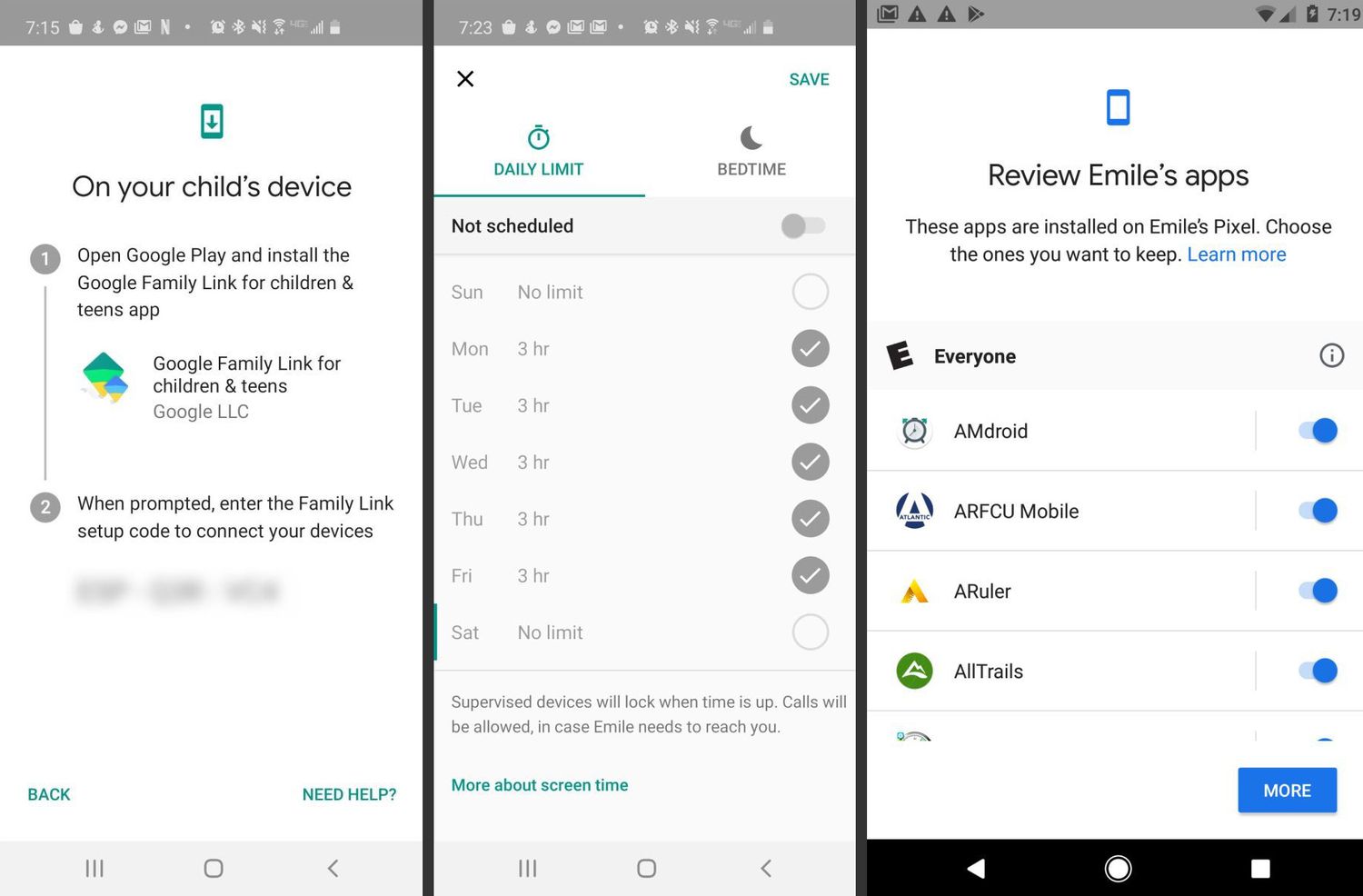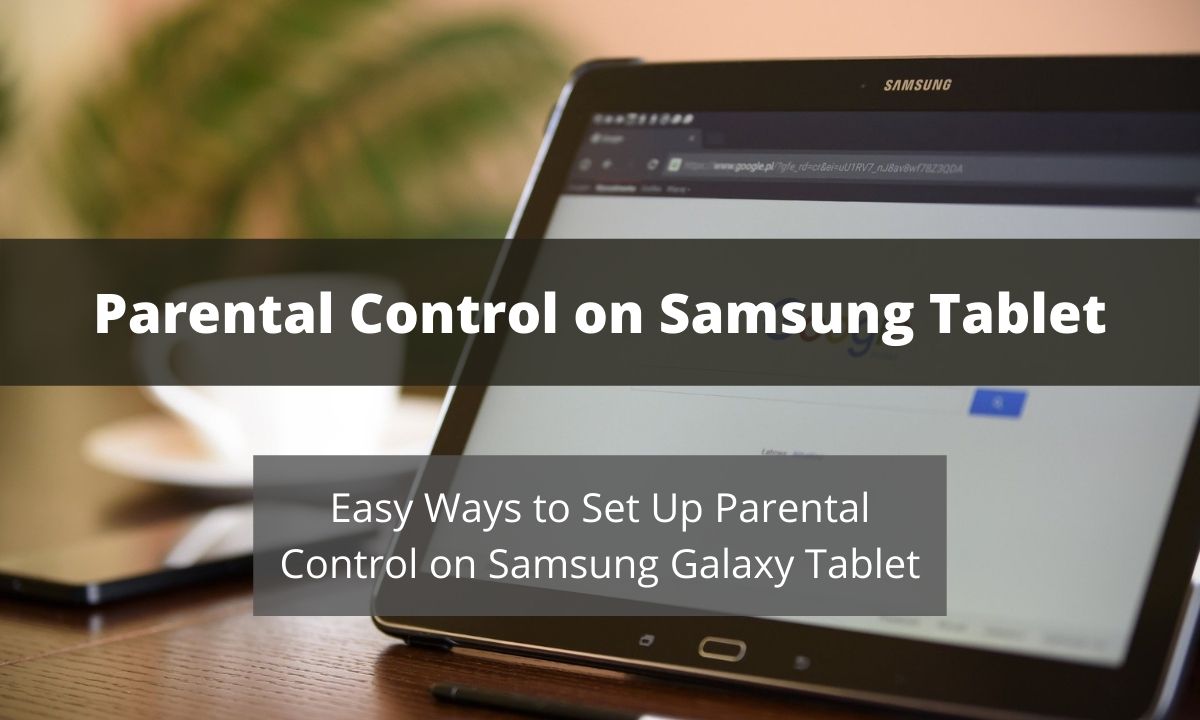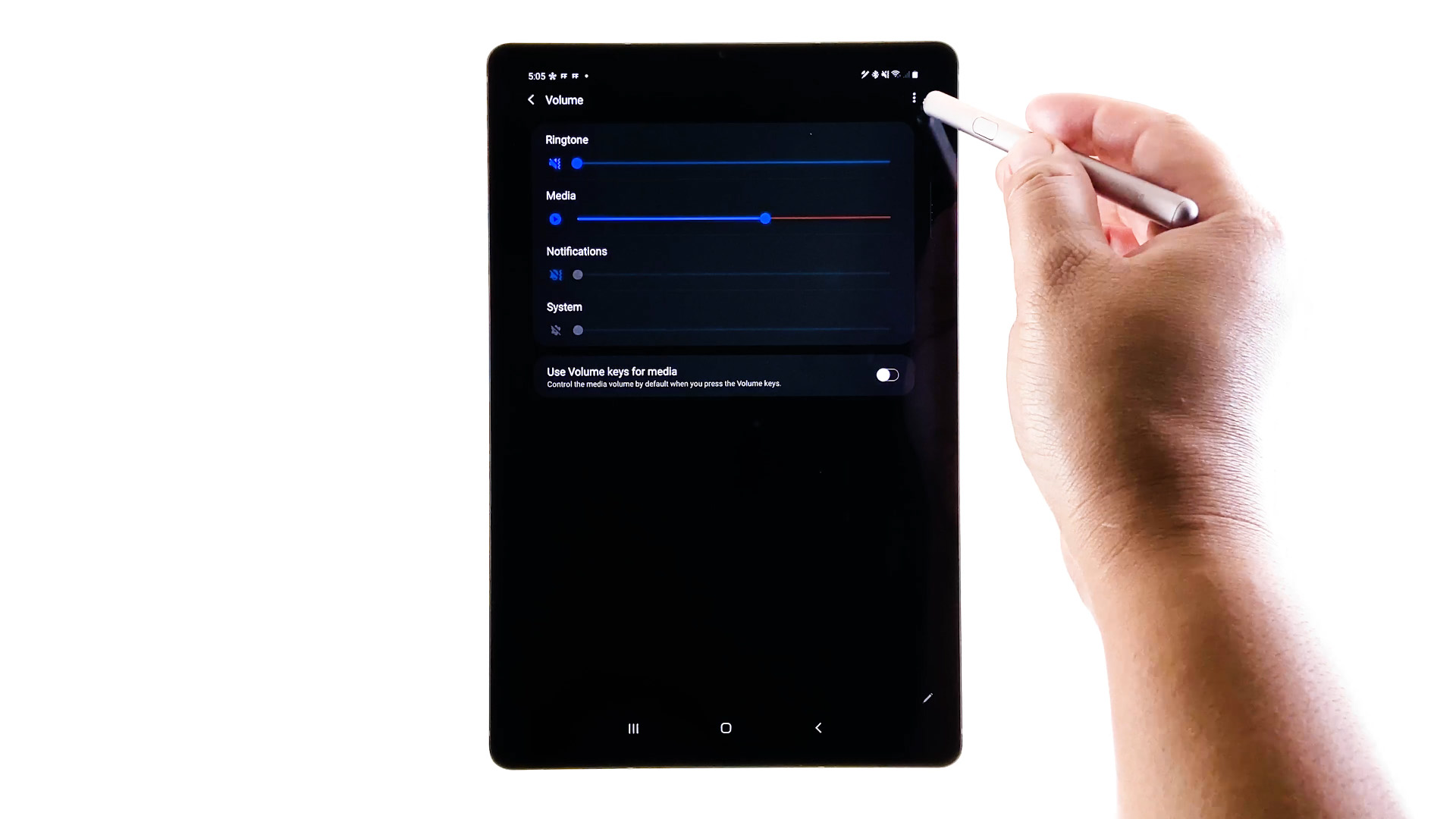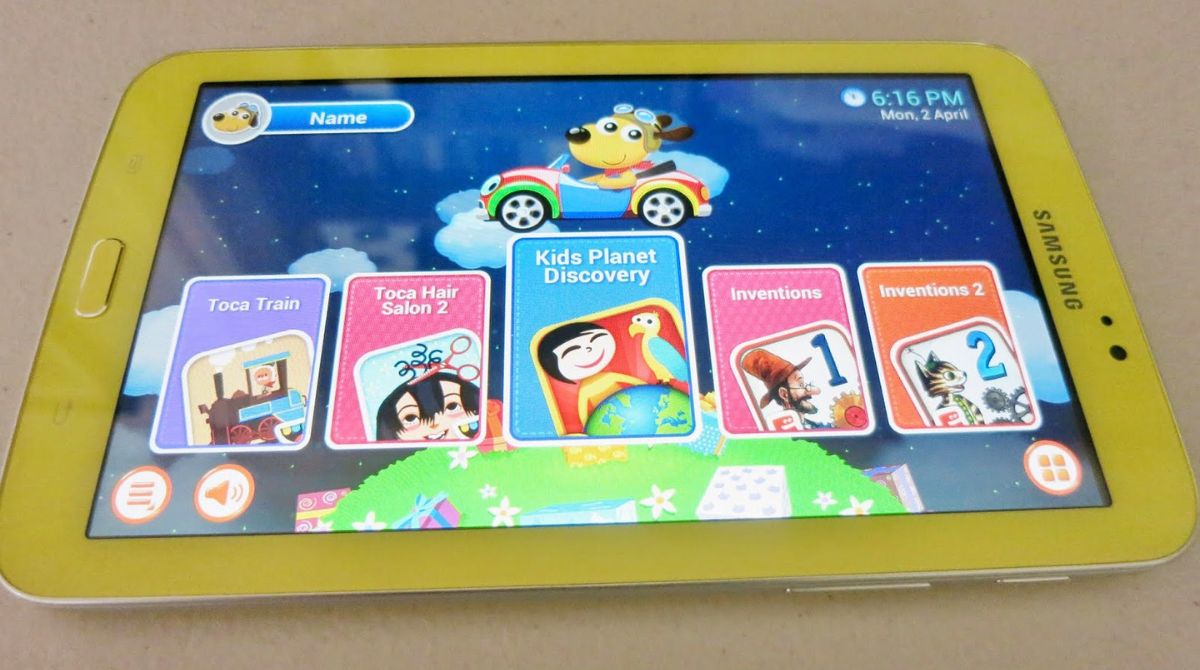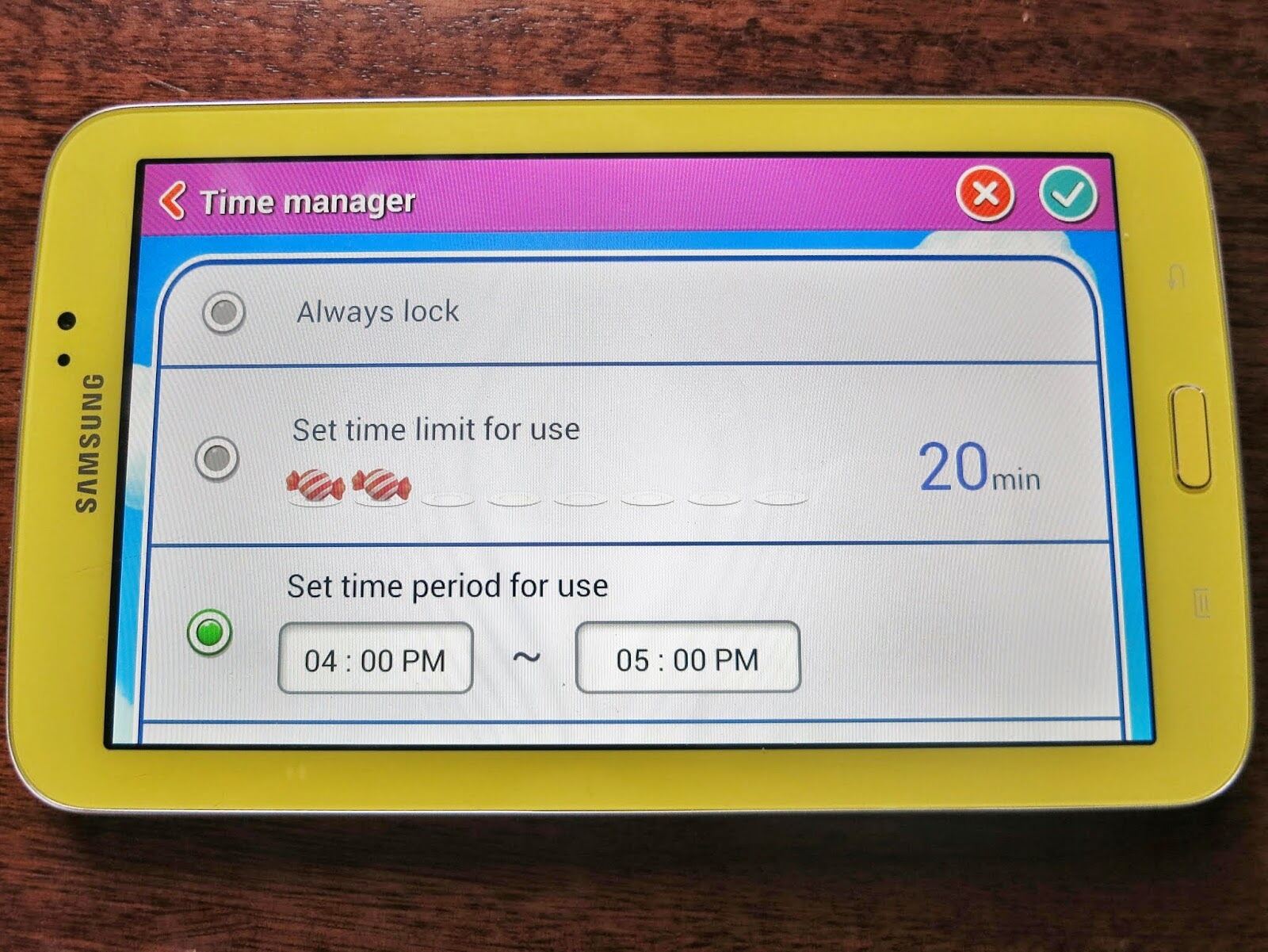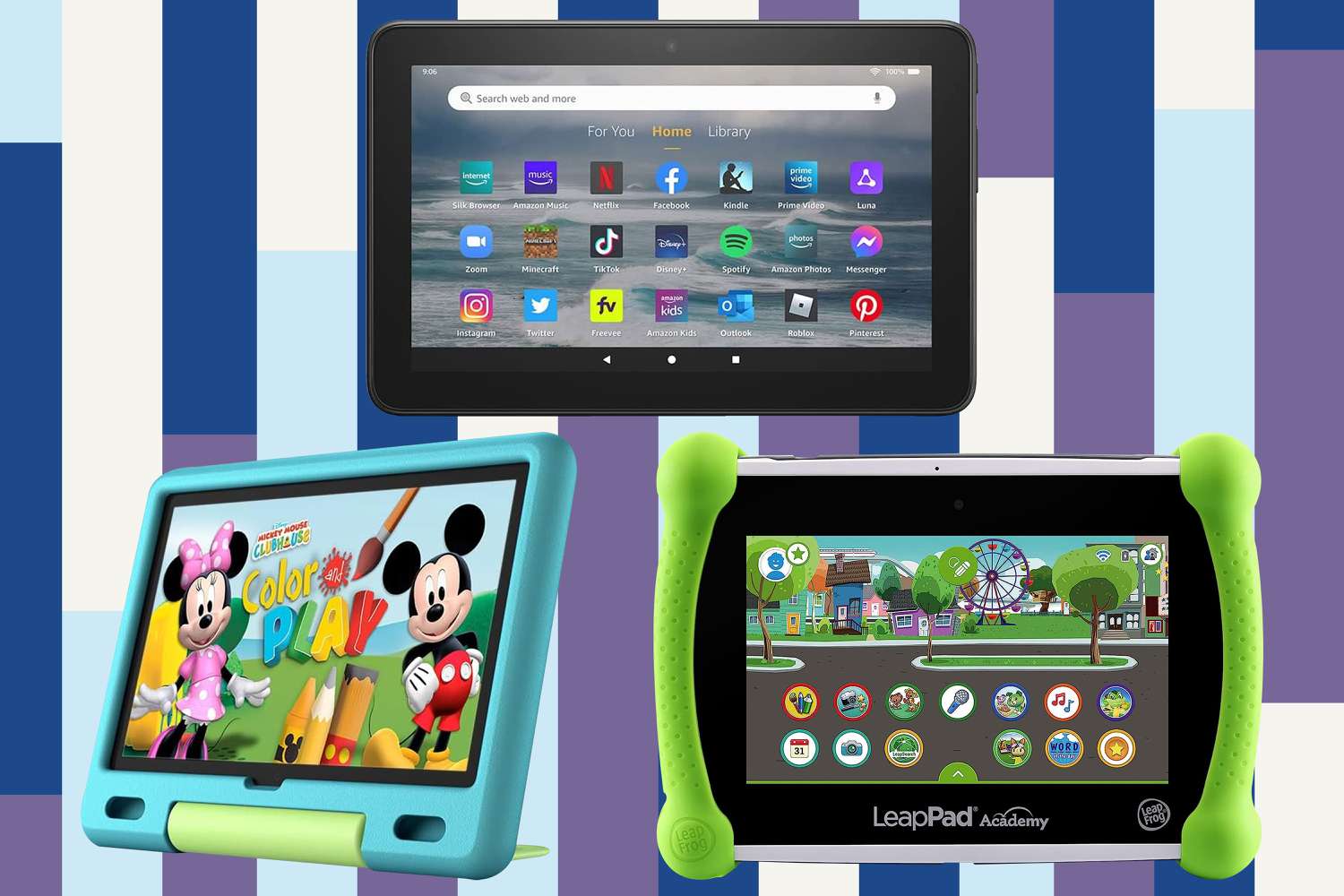Introduction
Parental controls are an essential tool for ensuring the safety and well-being of your children in the digital age. With an increasing number of children having access to smartphones and tablets, it becomes crucial to set up appropriate restrictions and filters to protect them from accessing inappropriate content or spending excessive time on their devices. If you are a Samsung tablet user, you’re in luck as Samsung provides a range of built-in parental control features that can help you create a safe and controlled environment for your child’s digital activities.
Whether you want to limit screen time, filter out explicit content, or restrict access to certain apps, Samsung tablets offer a comprehensive set of options to cater to your specific needs. In this guide, we will walk you through the step-by-step process of setting up parental controls on your Samsung tablet, allowing you to safeguard your child’s online experiences.
It is worth noting that the exact steps and options may vary slightly depending on the model and version of your Samsung tablet. However, the basic concepts and functionalities remain the same across most Samsung devices. With that said, let’s dive into the process of setting up parental controls on your Samsung tablet and empowering you to create a safe digital space for your child.
Step 1: Accessing the Settings Menu
To begin setting up parental controls on your Samsung tablet, you’ll first need to access the settings menu. The settings menu is where you can find all the necessary options to customize and control various aspects of your device. Here’s how you can access it:
1. Start by unlocking your Samsung tablet and navigating to the home screen.
2. Look for the “Settings” app icon, which typically resembles a gear or a cogwheel. Tap on it to open the settings menu.
3. Once you’re in the settings menu, you will see a list of different categories, such as “Connections,” “Display,” “Sounds and vibration,” and more. Scroll down until you find the “General management” category.
4. Tap on “General management” to expand the category and reveal additional options.
5. In the expanded view, you should see an option called “Parental controls.” Tap on it to proceed.
By following these steps, you will successfully access the settings menu on your Samsung tablet and locate the parental controls option. In the next steps, we will explore how to set up a restricted user profile, adjust app permissions, and implement other essential parental control features to create a safer digital environment for your child.
Step 2: Setting Up a Restricted User Profile
Once you have accessed the parental controls settings on your Samsung tablet, you can proceed to set up a restricted user profile for your child. This profile will allow you to customize the device’s functionality and restrict access to certain apps and features. Follow these steps to create a restricted user profile:
1. Within the parental controls settings, locate the option for “User profile” or “Add user.” Tap on it to begin creating a new profile.
2. You will be presented with two options: “Restricted profile” and “Guest profile.” Select “Restricted profile” to create a profile with limited access.
3. On the next screen, you’ll see a list of apps installed on your Samsung tablet. Toggle off the apps that you want to restrict your child’s access to. This step allows you to customize the apps available to them.
4. Additionally, you can tap on the individual app icons to adjust specific permissions, such as blocking in-app purchases or restricting access to certain features within the app. Take some time to review and configure these settings according to your preferences.
5. Once you have finished customizing the app access and permissions, save the changes by tapping on “Done” or a similar button. This will create the restricted user profile for your child.
Now, whenever your child uses the Samsung tablet, they can log into the created restricted user profile. This profile ensures that they have limited access to apps and features, allowing you to have more control over their digital experience. In the following steps, we will explore how to adjust app permissions, set time limits, and filter content to further enhance the parental controls on your Samsung tablet.
Step 3: Adjusting App Permissions
In addition to setting up a restricted user profile, you can further fine-tune the parental controls on your Samsung tablet by adjusting app permissions. This allows you to control specific actions and features within individual apps. Here’s how you can do it:
1. Go back to the parental controls settings in the settings menu of your Samsung tablet.
2. Look for the option called “App permissions” or something similar and tap on it to access the app permissions settings.
3. In the app permissions settings, you will see a list of different permissions categories, such as “Location,” “Camera,” “Microphone,” and more. Tap on each category to view and adjust the permissions for each app.
4. For each category, you can review the list of apps installed on your device and toggle off the permissions that you want to restrict for your child. For example, you may want to disable access to the camera or microphone for certain apps.
5. Take some time to go through each category and customize the app permissions based on your child’s needs and your desired level of control.
By adjusting the app permissions, you can ensure that your child’s access to certain device features and functionalities is restricted. This can help create a safer and more controlled digital environment for them. In the next steps, we will explore how to set time limits, filter content, and enable safe browsing on your Samsung tablet to further enhance the parental controls.
Step 4: Setting Time Limits
One of the key aspects of effective parental controls is managing screen time. Setting time limits on your child’s device usage can help promote a healthy balance between technology and other activities. Samsung tablets offer built-in features that allow you to set time restrictions for specific apps or the entire device. Here’s how you can set time limits on your Samsung tablet:
1. Return to the parental controls settings on your Samsung tablet.
2. Look for the option called “Screen time management” or similar and tap on it to access the time limits settings.
3. In the time limits settings, you can choose between two options: “Set time limit for apps” or “Set time limit for device.” Select the option that suits your preferences.
4. If you choose to set a time limit for apps, you can individually select apps from the list and set the maximum amount of time your child can spend on each app per day. This allows for more granular control over their app usage.
5. If you opt to set a time limit for the entire device, you can specify the maximum screen time allowed for your child for each day. Once the allocated time is up, the tablet will restrict access to the device.
6. Customize the time limits based on your child’s needs and your desired screen time restrictions.
By setting time limits, you can ensure that your child is not spending excessive amounts of time on their Samsung tablet. This feature encourages a healthy balance between screen time and other activities such as homework, physical exercise, or family interactions. In the following steps, we will explore how to filter content and websites, as well as enable safe browsing to further enhance the parental controls on your Samsung tablet.
Step 5: Filtering Content and Websites
Filtering content and websites is another crucial aspect of effective parental controls on your Samsung tablet. This feature allows you to block access to explicit or inappropriate content and ensure your child’s online safety. Here’s how you can filter content and websites:
1. Go back to the parental controls settings in the settings menu of your Samsung tablet.
2. Look for the option called “Content filtering” or something similar and tap on it to access the content filtering settings.
3. In the content filtering settings, you will find various options to filter and restrict content. You can choose to block specific categories such as violence, adult content, or gambling, or you can create a custom block list.
4. If you want to create a custom block list, tap on the option to add websites to the block list. Enter the URL of the website you want to block and save the changes. This will prevent your child from accessing that website.
5. Take some time to go through the available options and customize the content filtering settings based on your child’s age, maturity level, and your family’s values.
By filtering content and websites, you ensure that your child’s online experiences are safe and secure. This feature helps prevent them from stumbling upon inappropriate or harmful content while using the Samsung tablet. In the next step, we will explore how to enable safe browsing, which adds an additional layer of protection to your child’s web browsing activities.
Step 6: Enabling Safe Browsing
Enabling safe browsing on your Samsung tablet is a critical step in enhancing the parental controls and ensuring your child’s online safety. Safe browsing provides an extra layer of protection by highlighting and blocking potentially harmful websites. Here’s how you can enable safe browsing on your Samsung tablet:
1. Return to the parental controls settings on your Samsung tablet.
2. Look for the option called “Safe browsing” or something similar and tap on it to access the safe browsing settings.
3. In the safe browsing settings, you will typically find a toggle switch to enable or disable safe browsing. Toggle the switch to the “On” position to enable safe browsing.
4. Once enabled, safe browsing will automatically block access to websites that are known to contain malicious software, phishing attempts, or inappropriate content.
5. Safe browsing also allows you to customize the level of protection based on your child’s age and browsing needs. You may have options to adjust the strictness of safe browsing or add specific websites to a safe list.
6. Take a moment to review the available options and customize the safe browsing settings to align with your child’s online activities.
By enabling safe browsing, you provide an added layer of protection for your child’s web browsing activities. This feature helps safeguard against potential online threats and provides peace of mind for parents. In the final step, we will explore how to manage in-app purchases to prevent any accidental or unauthorized purchases on your Samsung tablet.
Step 7: Managing In-App Purchases
Managing in-app purchases is an important aspect of parental controls, especially when it comes to preventing accidental or unauthorized purchases on your Samsung tablet. By taking control of in-app purchases, you can avoid unexpected charges and have better oversight of your child’s spending. Here’s how you can manage in-app purchases:
1. Open the parental controls settings on your Samsung tablet.
2. Look for the option labeled “In-app purchases” or similar and tap on it to access the in-app purchase settings.
3. In the in-app purchase settings, you will usually find a toggle switch to enable or disable in-app purchases. Toggle the switch to the “Off” position to disable in-app purchases completely.
4. If you want to allow specific in-app purchases, you may have the option to set a PIN or password to authorize each purchase. This adds an extra layer of security and control over the in-app purchase process.
5. Take the time to review the available options and customize the in-app purchase settings based on your preferences and your child’s needs.
By managing in-app purchases, you can prevent any accidental or unauthorized expenditures on your Samsung tablet. This feature not only helps you control spending but also ensures that your child’s app usage remains within appropriate boundaries.
With these seven steps, you can effectively set up parental controls on your Samsung tablet, creating a safer and more controlled digital environment for your child. Remember to regularly review and update the parental control settings as your child grows and their needs change. By staying proactive and involved, you can provide the necessary protection and guidance for their online experiences.
Conclusion
Parental controls play a vital role in ensuring the safety and well-being of children in the digital age. With the increasing prevalence of smartphones and tablets, it is essential to establish effective measures to protect children from accessing inappropriate content and spending excessive time on their devices. Samsung tablets offer a range of built-in parental control features that allow you to create a safe and controlled environment for your child’s digital activities.
In this guide, we have covered the step-by-step process of setting up parental controls on your Samsung tablet. From accessing the settings menu to setting up restricted user profiles, adjusting app permissions, and managing in-app purchases, each step helps you customize and enhance the parental controls based on your specific needs and your child’s age and maturity level.
By following the steps outlined in this guide, you can create a safe digital space for your child. Setting time limits encourages a healthy balance between screen time and other activities. Filtering content and websites ensures that your child only has access to appropriate and safe online materials. Enabling safe browsing adds an extra layer of protection against potential online threats. Managing in-app purchases prevents unexpected charges and provides better oversight of your child’s spending.
Remember to regularly review and update the parental control settings on your Samsung tablet as your child grows and their needs change. Continuously evaluate and adjust the settings to align with your family’s values and ensure optimal protection.
By utilizing the powerful parental control features on your Samsung tablet, you can provide a safer and more controlled digital environment for your child. Take advantage of these tools and empower yourself to guide and protect your child’s online experiences.







